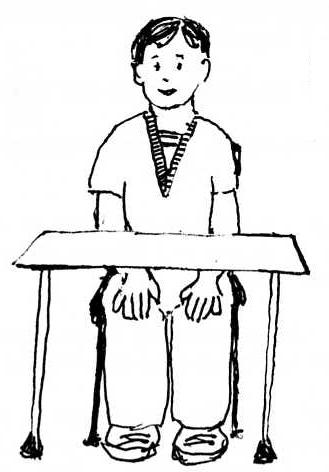
1 minute read
Preparing for Paper & Pencil
THREE EASY STEPS
When it comes to handwriting, children must be taught everything, including how to sit, position the paper, and hold a pencil. This is the physical approach to handwriting. Sometimes it’s the physical approach, not the letters and numbers, that causes a child to struggle with handwriting. Think of it like playing a musical instrument; if you don’t know how to position yourself and hold the instrument correctly, how can you play beautiful music? The same is true with writing letters and numbers. The ability to position yourself and hold your pencil correctly has a lot to do with being able to write legibly.
Important questions:
• How do you get children to sit up while writing? • How do you position the paper? • What is the secret to a good pencil grip?
STEP 1 – POSTURE
Does the furniture fit? The right size and style of chair and desk affect school performance. Children don’t come in a standard size! Check that every child can sit with feet flat on the floor and arms resting comfortably. Children who sit on their feet often will lose stability in their upper torso. On the following page, we show you how good posture can be fun. We have a secret for getting children to stop sitting on their feet.
STEP 2 – PAPER PLACEMENT
There’s a misconception that people should slant their paper to make slanted writing. Not true. In fact, we slant paper so that it fits the natural arc of the forearm. Children who slant their papers properly can write faster because the arm moves naturally with the paper.
STEP 3 – GRASPING GRIP
The most important thing to understand about pencil grip is that it doesn’t develop naturally—it is learned. Based on our years of experience helping children, we developed our own theories about how to develop good pencil grip habits effectively. Because children are born imitators, demonstration will lead to success.
On the next few pages, you will find fun strategies to help you teach posture, paper, and pencil skills.








